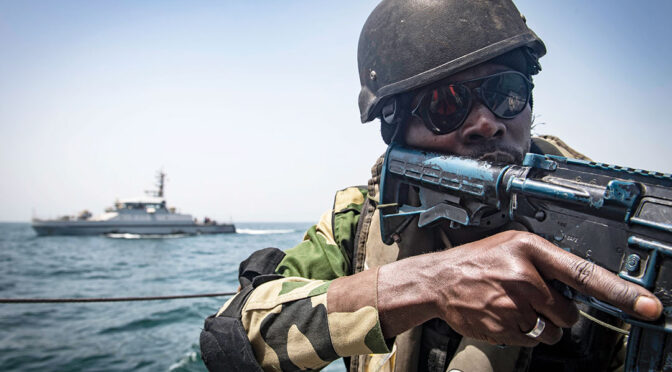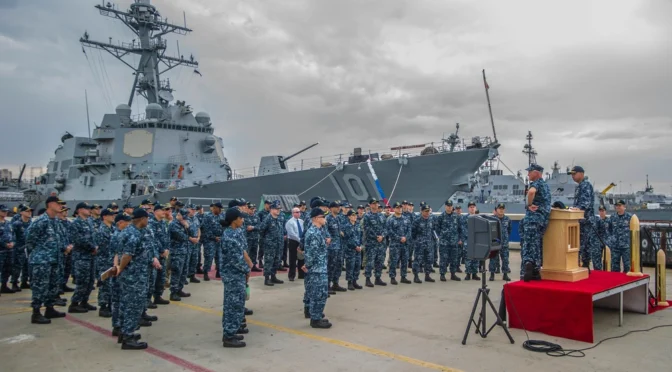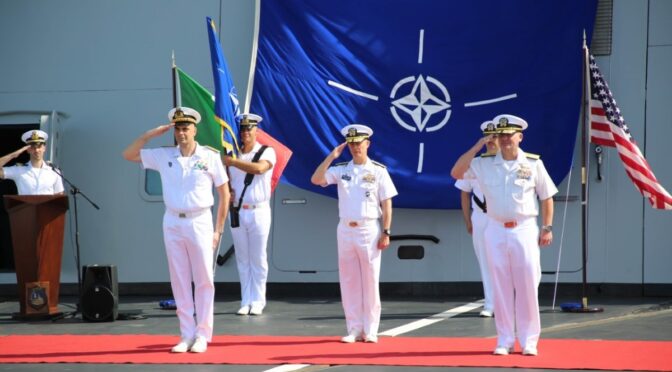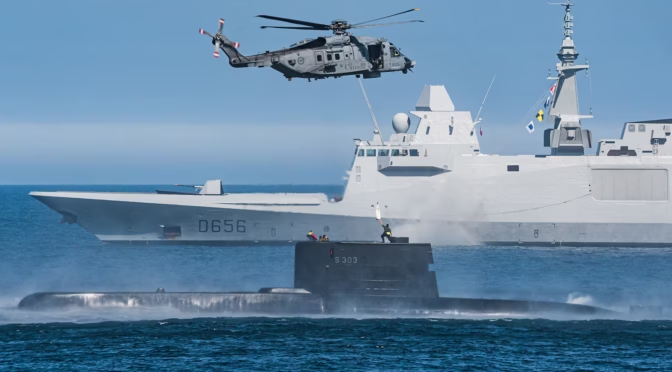By Dmitry Filipoff
From June 16-20, CIMSEC featured a series of articles written for the African Maritime Forces Summit (AMFS) 2025.
The summit, hosted in Mauritius from June 23-26, addresses African regional maritime security through the lens of the Western Indian Ocean. AMFS seeks to enhance regional maritime security by convening key maritime leaders to frame collective problems, coordinate strategies, and strengthen regional maritime cooperation. U.S. Naval Forces Europe and Africa (NAVEUR/NAVAF) and U.S. Marine Corps Forces Europe and Africa (MARFOREUR/AF) jointly sponsor the event, which is co-hosted this year by the Mauritius Police Force.
Authors covered a wide range of topics. The region features a multitude of maritime security challenges, but also burgeoning opportunities for cooperation. African maritime security will continue to witness interesting evolutions in challenge and adaptation as actors compete over maritime interests and norms.
Below are the authors who featured in this series. We thank them for their excellent contributions, and thank our partners at the U.S. Naval War College, U.S. Naval Postgraduate School, and the Africa Center for Strategic Studies.
Theme 1: Threats to Regional Maritime Security
“Escalating Threats to Maritime Security in the Western Indian Ocean Region,” by Brigadier General John Waweru (Ret.), IMO Consultant.
“A balanced strategy combining direct enforcement, multilateral diplomacy, and developmental initiatives is essential. Regional stakeholders, supported by international partners, must adopt an integrated approach to secure the blue economy, foster peace, and promote sustainable development across the WIO.”
“Diversifying Threats to Maritime Security in the Western Indian Ocean Region,” by Captain Harifidy A. Alex Ralaiarivony, Director of RMIFC.
“Future policy actions should prioritize sustaining and enhancing the regional maritime security architecture, fostering information sharing and coordination, building national capacities, and ensuring resources are available to address both persistent challenges and emerging crises. Continued vigilance and collaborative action, informed by timely and comprehensive data from centers like the RMIFC, are paramount to safeguarding the vital maritime domain of the WIO region for the benefit of all stakeholders.”
“Direct and Indirect Maritime Security Threats in the Western Indian Ocean,” by Captain Mark Blaine (Ret.), SIGLA Stellenbosch and SA Navy.
“Although the African continent disproportionately experiences the impact of these maritime threats, their consequences extend well beyond regional boundaries, carrying significant global implications. Addressing these challenges effectively requires a sustained commitment to strategic collaboration, the promotion of sustainable development, and the establishment of inclusive and accountable governance frameworks aimed at preserving the security and stability of this critical maritime domain.”
Theme 2: The Connecting Ocean: The Role of Non-African States in African Regional Maritime Security
“Connecting Ocean: The Role of Non-African States in African Regional Maritime Security,” by VADM Ignacio Villanueva Serrano, Operation Commander, EU NAVFOR ATALANTA.
“The interconnected nature of these threats demands a robust, collaborative response where non-African states, particularly through the European Union, provide essential support to regional efforts. Recent assessments indicate a low piracy threat in the Gulf of Aden and parts of the Somali Basin, though a realistic possibility of attacks persists. Conflict-related threats in the Red Sea remain severe for vessels linked to specific nations, reflecting the dynamic risk environment we navigate.”
“Africa’s Maritime Security Relations and the Global Responsibility to Protect the Sea,” by Dr. Christian Bueger, University of Copenhagen.
“The global distribution of resources, capital and expertise, post-colonial legacies, but also the roles that states are given under the law of the sea, imply that states perform different functions in providing maritime security. States have regulatory roles as coastal, port or flag states, in providing search and rescue services, but also in terms of the maritime industries within their jurisdictions, whether that is shipping, fishing, or energy production.”
“India’s Evolving Role in Supporting African Maritime Security Architecture,” by Dr. Abhishek Mishra, Associate Fellow, Manohar Parrikar Institute for Defence Studies and Analyses (MP-IDSA), New Delhi.
“The need of the hour is for African countries to express unity which is encapsulated under the concept of ‘Sisonke’ meaning “together” in isiXhosa. In such endeavours, India, with its operational capability and maritime expertise, could become a key partner in fostering African maritime capacities and creating cooperative frameworks that offer modest and meaningful alternatives for African development and maritime security.”
Theme 3: Developing Robust Regional Maritime Security Mechanisms
“Developing Robust Regional Maritime Security Mechanisms for the WIO,” by Major Raj Mohabeer, IOC and Mr. Kiruja Micheni, Djibouti Code of Conduct/Jeddah Amendment, International Maritime Organization.
“As a vital maritime corridor linking major global trade routes, the WIO and Red Sea region holds significant strategic importance. Yet, it faces a range of persistent and interlinked maritime threats—including piracy and armed robbery against ships, illicit trafficking, irregular migration, and illegal fishing, pollution (including deliberate)—exacerbated by jurisdictional gaps and weak coordination among enforcement agencies.”
“Rebuilding SADC’s Maritime Security Architecture,” by Mr. Timothy Walker, Institute for Security Studies, South Africa.
“While most Southern Africans formally endorse regionalism in maritime security, few have made sustained investments in SADC institutions. Despite an institutional anchorage dating to the mid-1990s aligned with continental frameworks and norms for peace and security, as well as two formal strategies adopted in 2011 and 2022, respectively, SADC’s ability to secure its extensive Atlantic and Indian Ocean littorals and become a more robust regional maritime security mechanism have remained limited.”
“From Fragmentation to Framework: The Evolution of Regional Maritime Governance in the Western Indian Ocean,” by Ms. Pascaline Alexandre, Africa Center for Competitive Intelligence (ACCI).
“At its core, the RMSA is more than a coordination platform—it’s a vehicle for regional empowerment. With a focus on maritime domain awareness, legal harmonization, and multilateral action, it gives African coastal and island states of the WIO region, the tools to assert greater control over their maritime future. The RMSA needs to be extended though.”
Dmitry Filipoff is CIMSEC’s Director of Online Content. Contact him at Content@cimsec.org.
The views presented are those of the authors and do not necessarily represent the official views of any government or organization with which they may be affiliated.
Featured Image: A Senegalese Sailor participates in a visit, board, search and seizure training scenario aboard the Gambian Navy ship Kuntah Kinteh during Obangame Express in the Gulf of Guinea. (U.S. Navy photo by Petty Officer 1st Class Ryan Kledzik)




